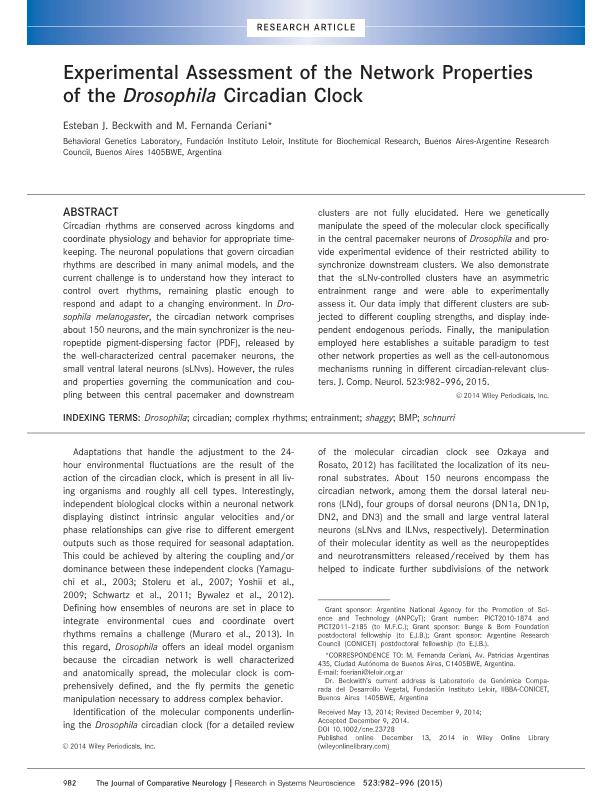Artículo
Experimental assessment of the network properties of the Drosophila circadian clock
Fecha de publicación:
04/2015
Editorial:
Wiley
Revista:
Journal Of Comparative Neurology
ISSN:
0021-9967
e-ISSN:
1096-9861
Idioma:
Inglés
Tipo de recurso:
Artículo publicado
Clasificación temática:
Resumen
Circadian rhythms are conserved across kingdoms and coordinate physiology and behavior for appropriate time-keeping. The neuronal populations that govern circadian rhythms are described in many animal models, and the current challenge is to understand how they interact to control overt rhythms, remaining plastic enough to respond and adapt to a changing environment. In Drosophila melanogaster, the circadian network comprises about 150 neurons, and the main synchronizer is the neuropeptide pigment-dispersing factor (PDF), released by the well-characterized central pacemaker neurons, the small ventral lateral neurons (sLNvs). However, the rules and properties governing the communication and coupling between this central pacemaker and downstream clusters are not fully elucidated. Here we genetically manipulate the speed of the molecular clock specifically in the central pacemaker neurons of Drosophila and provide experimental evidence of their restricted ability to synchronize downstream clusters. We also demonstrate that the sLNv-controlled clusters have an asymmetric entrainment range and were able to experimentally assess it. Our data imply that different clusters are subjected to different coupling strengths, and display independent endogenous periods. Finally, the manipulation employed here establishes a suitable paradigm to test other network properties as well as the cell-autonomous mechanisms running in different circadian-relevant clusters.
Palabras clave:
Drosophila
,
Circadian
,
Complex Rhythms
,
Entrainment
Archivos asociados
Licencia
Identificadores
Colecciones
Articulos(IIBBA)
Articulos de INST.DE INVEST.BIOQUIMICAS DE BS.AS(I)
Articulos de INST.DE INVEST.BIOQUIMICAS DE BS.AS(I)
Citación
Beckwith, Esteban Javier; Ceriani, Maria Fernanda; Experimental assessment of the network properties of the Drosophila circadian clock; Wiley; Journal Of Comparative Neurology; 523; 6; 4-2015; 982-996
Compartir
Altmétricas




